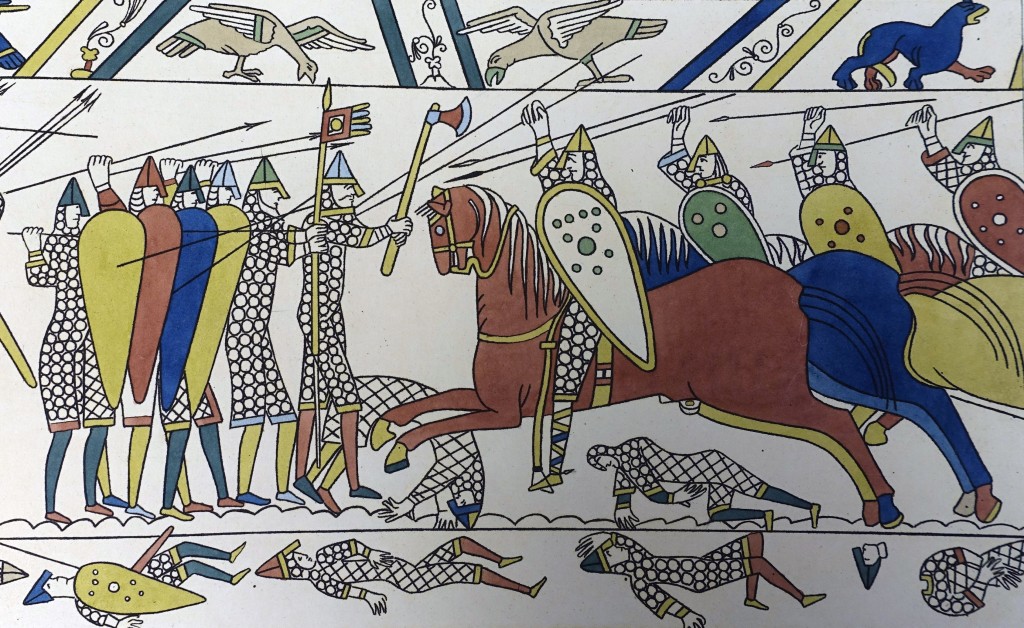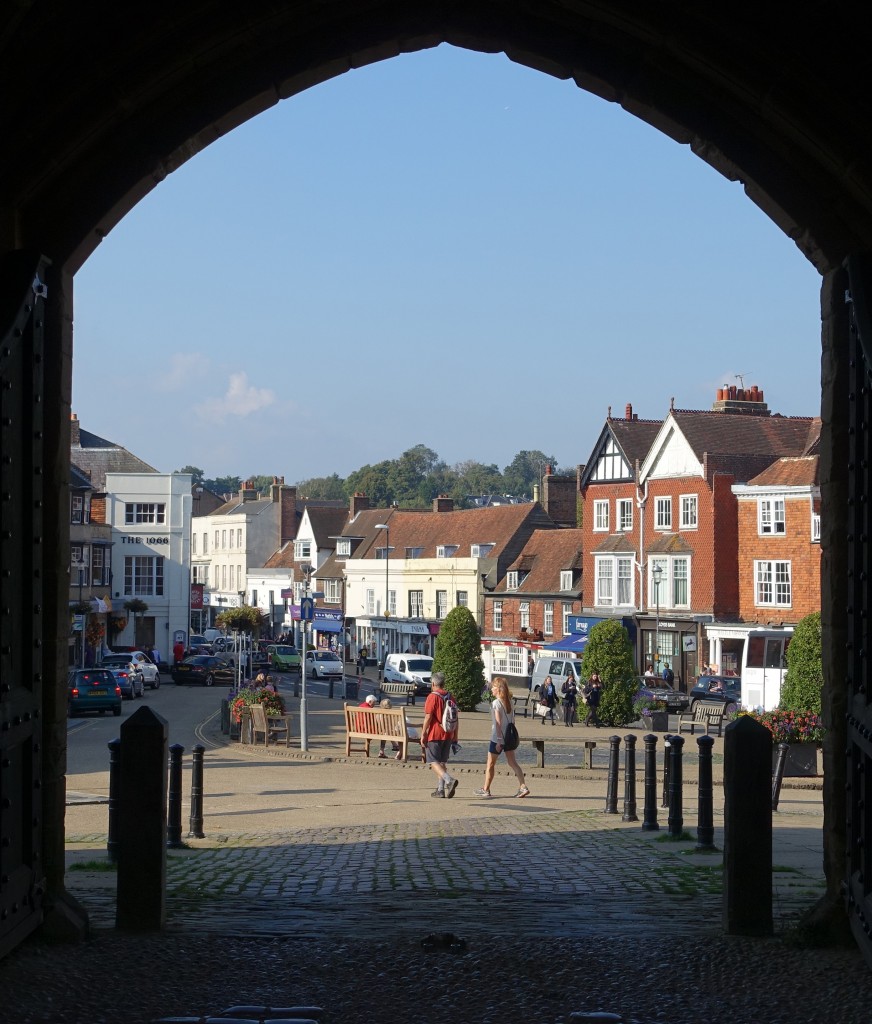
This week we commemorate the Battle of Hastings, fought not at Hastings but at Battle in East Sussex, on the 14th October 1066.
King Harold’s death on the battlefield marked the end of Anglo-Saxon England. Duke William of Normandy would be crowned King of England on Christmas Day at the Saxon Westminster Abbey in London.

In the September of 1066 news reached King Harold that a Norwegian army had landed at York under the leadership of Hardrada. Harold hurried north gathering an army as he went. He met the Norwegians at Stamford Bridge on the 25th September and inflicted a crushing defeat on the invaders.
The English Saxon navy commanded some three hundred ships and dominated the seas, but it was kept at harbour by the prevailing weather as William, Duke of Normandy, sailed for the shores of England. He landed at Hastings, in what is now Sussex, and built a temporary fort.
Harold now hurried south to defend his family lands and kingdom hoping to once again benefit from the element of surprise.
Harold gathered the fyrd, the members of his senior professional army, and the housecarls to him. But William heard news of the Saxon army’s approach and moved to meet them at Battle.
The Saxon’s fought on foot wielding their axes to deadly effect. They formed a shield wall around their King repelling the Norman batteries of crossbow arrows and Knights on horseback. The battle raged throughout the day and the Saxon line was broken as the Norman’s feigned retreat and Harold’s forces pursued them. The Norman’s final assault took place as the October autumn light faded. Harold, it is said, was killed by an arrow piercing his eye.
These scenes were captured in the Bayeux Tapestry. The tapestry was embroidered in coloured wools on a linen strip measuring 230 feet long and 20 inches high. The tapestry shares many similarities with Saxon illuminated manuscripts. Many academics believe that it was worked by Saxon craftsmen at Canterbury.

The great Benedictine Abbey was established at Battle by William to give thanks for his victory. It flourished for more than 400 years until Henry VIII’s suppression of the monasteries during the Reformation.
As you stand amongst the ruins of Battle Abbey there is a stillness which makes it hard to imagine the fierceness of the bloody, long and hard fought battle. William insisted that the High Altar be placed over the spot where King Harold fell and today a plaque marks its position in the Abbey grounds.

England would be changed forever as the Normans built over and upon the rich foundations of the Saxon kingdom. Sussex is rich in Saxon art and history and there is much to be rediscovered.
The town of Battle, with its picturesque High Street, has always been dependent upon its Abbey. This weekend the town will celebrate the 950th anniversary of this famous battle with a series of events. To find out more go to www.battlelocalhistory.com/battle-950 and www.englishheritage.org.uk.
By Rupert Toovey, a senior director of Toovey’s, the leading fine art auction house in West Sussex, based on the A24 at Washington. Originally published in the West Sussex Gazette.